Recent Commercial Posts
How Do I File a Claim After a Fire?
10/11/2022 (Permalink)
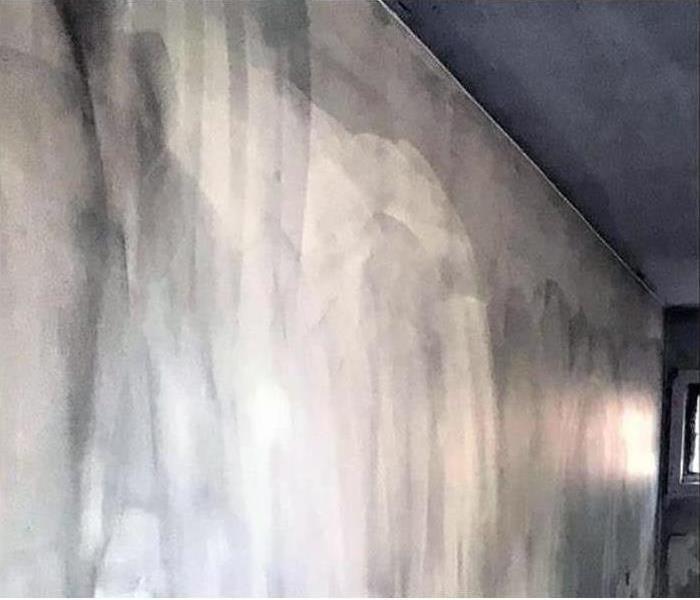 SERVPRO of Lafayette/Louisville is available 24/7, and we will make Fire damage “Like it never even happened.”
SERVPRO of Lafayette/Louisville is available 24/7, and we will make Fire damage “Like it never even happened.”
How Do I File a Claim Following a Fire?
If you have had a fire in your Valmont, CO home, there are many questions to ask and decisions to make. One of the most important things that you can do is file a claim with your insurance company. Here’s what you need to know about filing a fire damage claim:
Filing a Damage Claim
After a fire, one of the first things you should do is contact your insurance company and file a claim. There are deadlines for all sorts of different types of claims, so it’s important to know when you need to make your claim. These deadlines will vary from state to state and from insurance company to insurance company, but they can be anywhere from 24 hours after the loss occurred up until 90 days later. It’s best not to wait too long before filing a claim because if you do, then it may be harder for them to investigate what happened.
There are two types of claims: property damage claims and personal injury claims. Property damage claims include things like water damage cleanup services or structural repairs needed after fire damage has been done, whereas personal injury claims cover medical costs related directly due to injuries sustained during an incident.
Call a Professional Restoration Service
When it comes to fire damage, the best thing you can do is call a professional restoration company like SERVPRO of Lafayette/Louisville as soon as possible. Our certified technicians will be able to assess the extent of your fire damage and help you get it cleaned up quickly so that your home is ready for repairs.
If there is structural damage to your home, call a professional restoration company like SERVPRO of Lafayette/Louisville to help mitigate the damage while they wait for the insurance adjuster to come out.
File Your Claim as Soon as Possible
To begin with, contact your insurance company as soon as possible after a fire has occurred. Most policies do require you to notify them within a reasonable amount of time after the loss occurs, so call as soon as you can (if not immediately). Also check your policy or contact your agent for more information about how claims work and what types of claims will be covered under different policies.
Conclusion
If you are not sure what type of claim to file or how to do it, talk to your insurance agent. They will be able to help guide you through the process and answer any questions you may have.
What Causes Category 1 Water Damage?
7/27/2022 (Permalink)
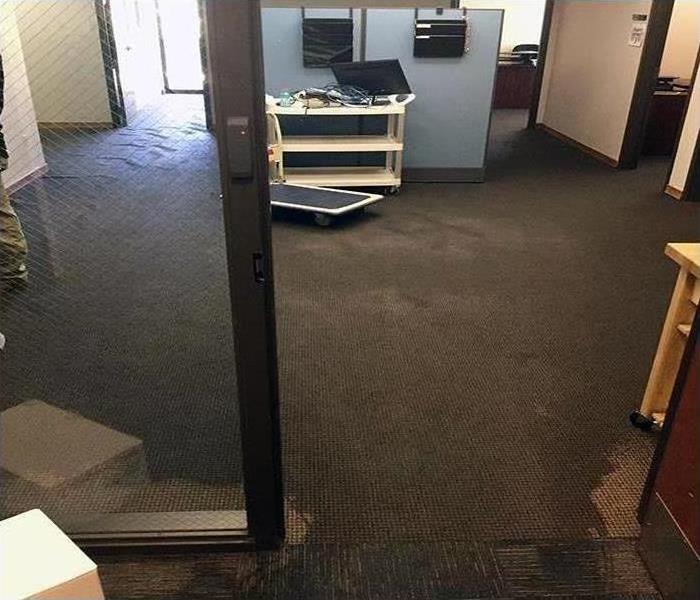 Water damage in a Valmont, CO office
Water damage in a Valmont, CO office
Discover The Causes Of Category 1 Water Damage
Restoration professionals categorize damage caused by a broken supply line as Category One water damage. Clean water is initially free of contaminants, but its condition can deteriorate within a matter of hours. Discover the causes of Category One water damage and how to prevent these incidents from affecting a commercial facility in Valmont, CO.
A Broken Supply Line
When a pipe breaks, a commercial building may rapidly begin filling with water. All of the following measures can limit damage:
- Turn off the building water supply
- Collect as much water as possible
- Try to prevent damage from intensifying
Water released by a broken line is clean and treated, its condition begins to degrade as soon as it is released into a structure. Water working its way between floors downgrades damage from Category One to Category Two. Water left standing for longer than 24 to 48 hours becomes Category Three damage.
A Pipe With a Leak
A leaky pipe can be a more insidious problem than a broken line, particularly in terms of the potential for major secondary damage. Clean water that drips from a pipe can sustain hidden mold growth and require a combination of water damage restoration and mold remediation.
A Leaky Appliance
Any appliance that has faulty or worn plumbing hardware or connection components may leak water. Repairing connections is essential for appliances to continue functioning properly and to reduce the risk of water damage.
Clean water from a broken pipe is the most common source of Category One water damage. Depending on the condition of the line, water may be either spraying or dripping. The flow rate or a timely shut off will determine the degree of damage to a structure. Turning off the water supply and taking measures to contain a leak can also limit how far water damage spreads through a commercial building in Valmont, CO.
3 Common Plumbing Problems in Commercial Buildings
6/9/2022 (Permalink)
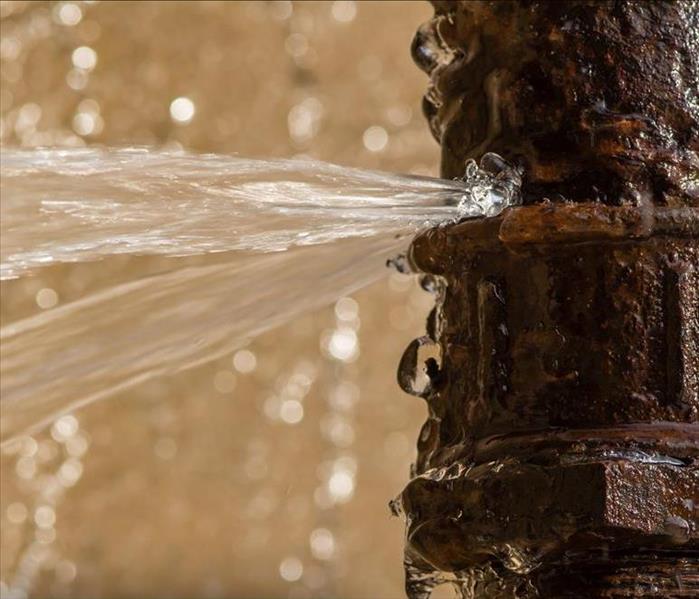 Over time, your Louisville, CO building pipes may degrade and cause slow leaks that can lead to pipe breaks and moderate to serious flooding.
Over time, your Louisville, CO building pipes may degrade and cause slow leaks that can lead to pipe breaks and moderate to serious flooding.
Three Plumbing Issues That Affect Commercial Buildings
Your Louisville, CO, commercial building is likely a major investment for you, no matter the industry, so understanding how to maintain its plumbing system and anticipating issues before they happen can help you reduce the risk of building damage, whether the cause is a blocked sewer or a faulty plumbing pipe.
1. Leaky Pipes
Over time, your building's pipes may degrade and cause slow leaks that can lead to pipe breaks and moderate to serious flooding. In some cases, you may not discover these leaks right away, especially when pipes are hidden behind cabinet doors or other fixtures. Checking your building's pipes at least annually can prevent this common issue from becoming a major problem.
2. A Blocked Sewer
Localized flooding can cause problems with your building's sewers, especially when debris causes a backup. This can also cause other serious issues, such as a toilet overflow in one or more bathrooms. Because this issue is sometimes difficult to predict unless your business is located in a low-lying area, remaining aware of weather patterns and possible flood conditions may help alert you to potential sewer blockages.
3. Old/Outdated Plumbing
If you rent or own an older commercial building, then you may run into plumbing issues that cause your building's toilets to flush slowly, weakly, or back up, which can result in a nasty mess. Older copper pipes might also fail, so calling in a water restoration and mitigation service to inspect your older building's plumbing and advise you how to repair it can prevent these problems.
Your Louisville, CO, business may experience a variety of common plumbing problems that could stem from a blocked sewer or old plumbing pipes, all of which can be alarming. However, when you can anticipate certain issues and practice proper plumbing maintenance, you may avoid costly repairs and the headaches that come with them.
Tips to Prevent Water Damage During Construction
6/2/2022 (Permalink)
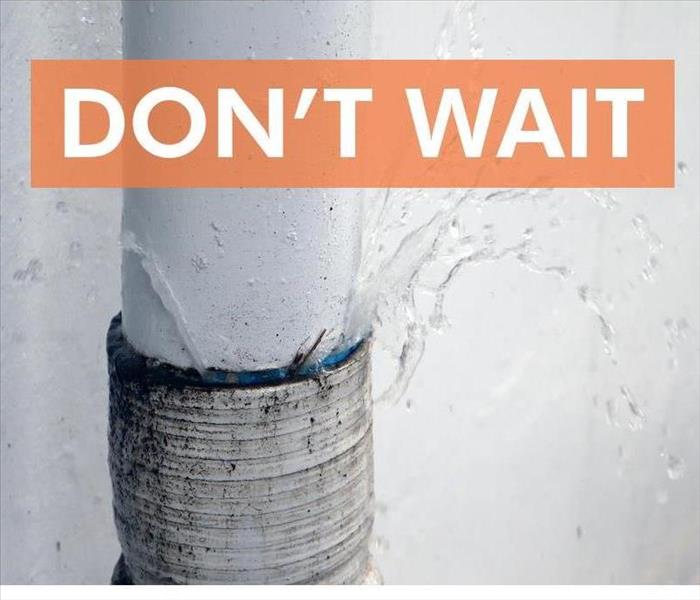 Broken water pipes can put a real damper on your Lafayette, CO construction project.
Broken water pipes can put a real damper on your Lafayette, CO construction project.
Water Damage Prevention Tips During Construction
Broken water pipes can put a real damper on your construction project. Any resulting water damage could potentially halt construction until the completion of the water pipe repair. This costs both you and the construction contractor time and money. Follow these tips to prevent water damage to your Lafayette, CO, commercial facility.
1. Prevent Foundational Issues
Establish a quality assurance program and director to ensure the correct materials and methods are used to prevent water damage. This includes installing a proper drainage system to direct water away from excavation and construction sites.
Cracks in a building's foundation and walls may develop due to structural flooding during construction. Do not attempt to fix the cracks yourself. Consult with an engineer who can survey the damage and come up with treatment options.
2. Monitor Pipes for Breaks
Create a team assigned solely to water damage prevention and treatment. This is especially important during initial pipe charging due to potential leaks. Monitor the pipes for twenty fours hours after charging in case you need to call an emergency water pipe repair service.
If a broken pipe leaks on an upper floor, the water may trickle down to lower levels, swelling ceilings and walls. Extensive water damage may lead to structural collapse requiring complete reconstruction of affected rooms and areas in the building.
3. Prevent Flooded Structures
Keep pumps and other water removal tools on hand for emergency flood mitigation. Fix any water issues within forty-eight hours to help prevent lasting damage.
Mold formation occurs if water damage isn't resolved quickly enough. Once mold takes hold, it can be difficult to get rid of. A water remediation company would need to be brought in to assess the extent of the infestation and create a plan to eradicate it.
Follow these tips to prevent costly water damage to your commercial facility. Keep trusted agents on call for water pipe repair and other mitigation efforts through the entire construction process.
How Does an Electronic Claims Service Work?
3/2/2022 (Permalink)
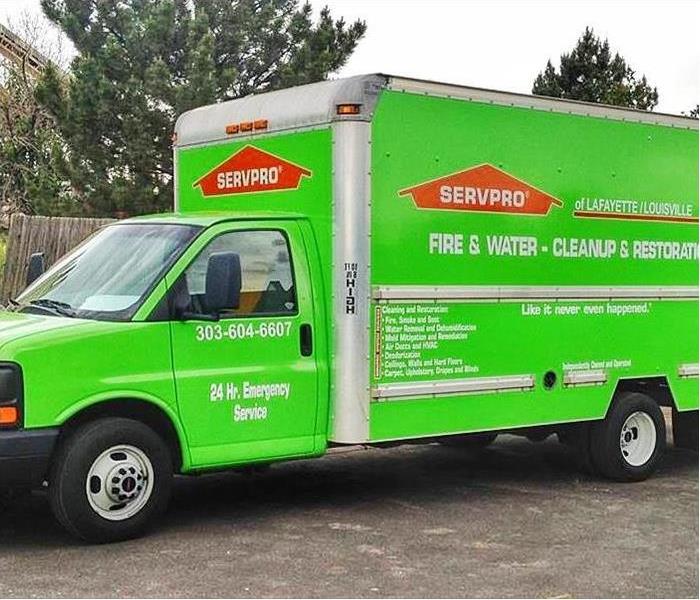 An electronic claims service connects local SERVPRO franchises with the national corporation.
An electronic claims service connects local SERVPRO franchises with the national corporation.
What Is an Electronic Claims Service and How Does It Work?
An electronic claims service provides insurance agents and adjusters with information about individual claims and collected data. SERVPRO maintains this service to support insurance claim processing and settlement. Find out how this electronic service can make settling claims easier and faster.
Restoration Professionals Upload Estimates
Local franchises upload information to an internal corporate database. Estimates and claim information are then made available to insurers thorough an electronic claims service. Agents and adjusters can access several types of information to process and settle a claim:
- Causes of loss
- Types of damage
- Estimates
The availability of this information can relieve property owners of some of the burden of providing documentation to insurers. In addition to viewing this information, most insurers will also arrange to have an adjuster inspect the damage.
Agents and Adjusters Access Claim Information
An electronic claims service supports every stage of the claims process. An insurance agent or adjuster can access information related to a claim at any time. The service also provides access to collected data from across the country and makes it possible to narrow results to the same region, state, county or local area as a particular job. This data helps make sure that an insurance claim is in line with averages and can make it easier to account for additional costs.
Claim Updates Are Made Available
Insurance company representatives can find updated information on a claims service throughout the mitigation and restoration process. If additional damage is discovered, this information will be made available. Insurers can use this service to determine whether this damage is covered.
An electronic claims service connects local SERVPRO franchises with the national corporation. In turn, this service also supports communication between the mitigation and restoration service and insurance companies. Settling an insurance claim may be faster and less stressful when information is available online for a property in Valmont, CO.
How Do Cities Prevent Flooding?
2/2/2022 (Permalink)
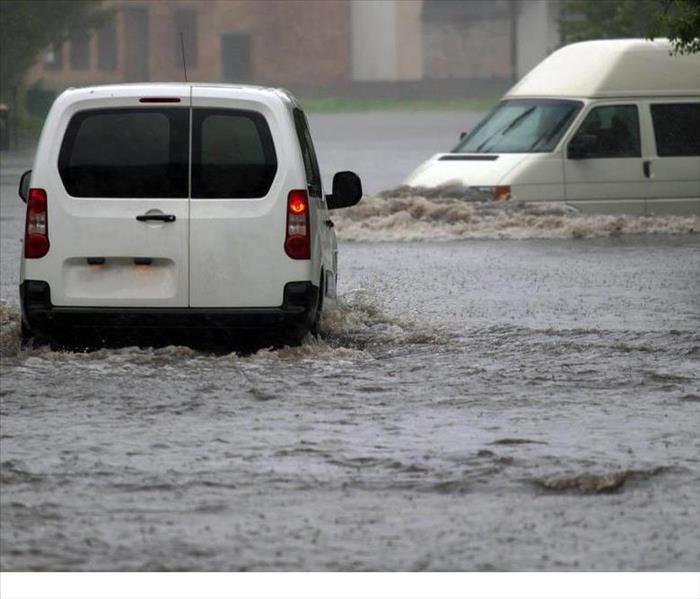 If a commercial property is located in a floodplain, the owner must obtain flood insurance coverage through the National Flood Insurance Program.
If a commercial property is located in a floodplain, the owner must obtain flood insurance coverage through the National Flood Insurance Program.
How Do Cities Keep Floods At Bay?
Urban planners and hydrologists around the world use a variety of methods to manage high water levels. Some of the following methods may be helpful for managing heavy rains or rising bodies of water in Louisville, CO.
Barriers, Dams, Gates and Levees
Some of the most common urban flood prevention methods involve controlling the rise and flow of bodies of water. A variety of methods are used on coasts, rivers and lakes:
- Barriers, self-closing or manual
- Dams, with or without conservation storage
- Tide gates
- Levees
These options are suited for different bodies of water. Barriers and dams are both used on inland waterways, whereas levees and tide gates tend to be situated in estuaries or sloughs.
Diversion Canals and Floodways
Flood control channels may be useful for cities that regularly experience heavy rainfall. A channel or canal can divert high water to several locations:
- Man-made channels
- Temporary holding ponds
- Other bodies of water
These methods can direct water away from developed areas toward locations less likely to be harmed by flooding. These channels may run on the surface in basins or underground.
Flood Plains and Rain Gardens
Groundwater replenishment by diversion is a stormwater management method that is increasingly being implemented in environmentally-conscious cities. Rain gardens function by slowing down the pace of drainage, whereas floodplain restoration projects may aim to reduce flooding, recharge groundwater and restore aquatic ecosystems.
Cities around the world rely on these methods to stop flooding. The most important factors to consider include the source and patterns of high water levels. If a commercial property is located on a floodplain in Louisville, CO, the owner should obtain flood insurance coverage through the National Flood Insurance Program or in the form of an endorsement to a commercial property insurance policy. This coverage is necessary to restore damage caused by flooding, which is excluded from most property policies.
The 4 Steps of the Roof Damage Cleanup Process
2/1/2022 (Permalink)
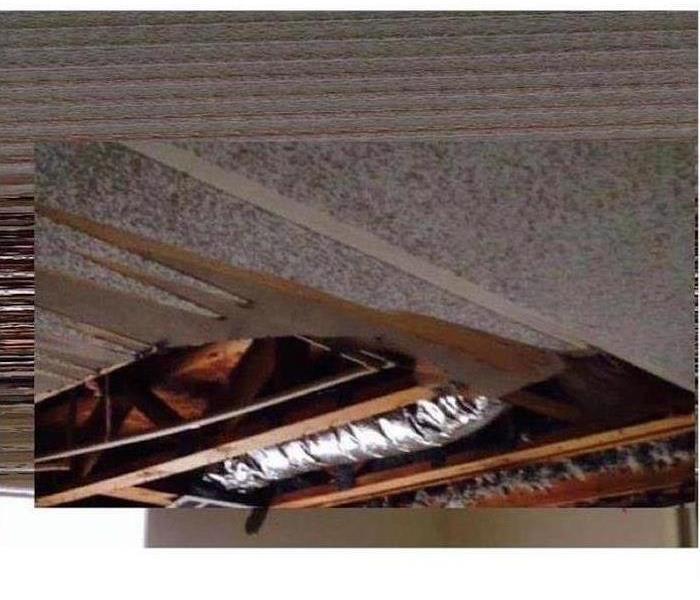 Storm damage occurred at this Louisville shopping center damaging the roof of the building. The weight of the water was just too great for the ceiling
Storm damage occurred at this Louisville shopping center damaging the roof of the building. The weight of the water was just too great for the ceiling
The Roof Damage Cleanup Process In Four Steps
Many people think of flooding as something that happens at the base of a building. Flood waters rise and break over barriers to flood the basement and bottom floors. Another common flooding problem associated with storms, however, is a roof leak. If the roof of your commercial building in Lafayette, CO, gets damaged, rain can seep in and cause further problems. Here are the steps to resolve those problems.
1. Drying Area
The first thing that has to happen when missing shingles cause water damage in your attic or top floor is for all the excess water to be removed. Water remediation professionals use industrial pumps to remove standing water. They may increase airflow in the affected area to dry surfaces. Making sure the area is dried quickly can help prevent secondary damage such as mold growth.
2. Removing Damage
If the roof leak is significant, there may be a lot of damage not just to the roof but also to the layers of the building directly underneath it. Waterlogged walls or ceilings are no longer structurally sound. Materials have to be torn out if they cannot be salvaged.
3. Disinfecting Surfaces
Because flood water is contaminated, everything it touches must be sanitized. Professional strength cleaners are used to remove bacteria and other harmful substances. Afterwards, the surfaces can be tested to ensure that they are clean.
4. Rebuilding Roof
After the cleaning is finished, the technicians repair the damaged roof. They make sure the base is strong and well-sealed against further leaks. Then they replace the shingles that are broken or missing. If any interior parts need to be rebuilt, they can do that as well.
A roof leak doesn’t always show signs of significant damage at first, so it’s important not to forget the roof in your inspection after a flood. You can avoid further problems by addressing any roof issues in a timely manner.
 SERVPRO of Lafayette/Louisville is available 24/7, and we will make Fire damage “Like it never even happened.”
SERVPRO of Lafayette/Louisville is available 24/7, and we will make Fire damage “Like it never even happened.”






 24/7 Emergency Service
24/7 Emergency Service




